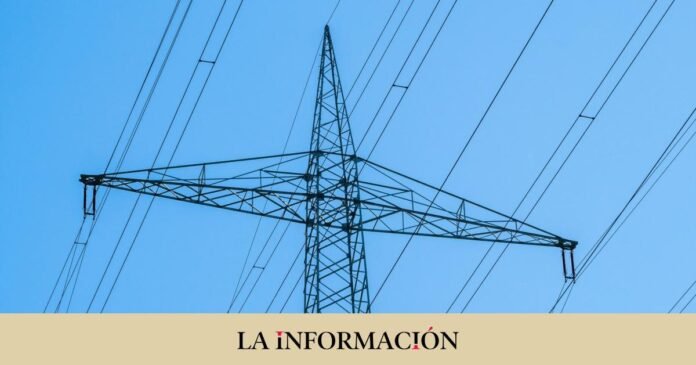The National Commission for Markets and Competition (CNMC) has already made billing forecasts for electricity companies for the new year. The agency will calculate that they will enter a total of 65,043 million euros for their marketing activity -which they will invoice to final consumers-, which represents an increase of 6% compared to the previous year, or what is 3,883 million. more.
This is stated in its report to the Ministry for the Ecological Transition and the Demographic Challenge in relation to the request for a proposal for the determination of unit values for the financing of the social bond 2023, consulted by La Información.
As the agency points out, to forecast the income from the marketing activity, the billing of tolls and charges, and that derived from market purchases, are added. The energy supplied by retailers will be around 224,100 gigawatt hours (GWh), 2.6% less than in 2022.
It should be noted that this figure does not represent the total electricity consumption that is expected in Spain for this year, but that the demand will be around 254,700 GWh, according to the CNMC, 2.12% above the data registered last year. when it fell even to levels below the pandemic as a result of high prices.
More than 200 euros/MWh
“The expected demand at the point of consumption for the year 2023 has been divided between the energy supplied by the marketers and that consumed by direct consumers in the market,” says the CNMC. Direct consumers in the market are those who buy energy directly in the wholesale market for their own consumption.
Despite the fact that the estimated consumption is lower, billing rises due to higher electricity prices. The CNMC has considered the following prices for its calculations: 200.75 euros per megawatt hour (MWh) for the daily market and 206.15 euros/MWh for the average final price.
On their side, companies such as Iberdrola, Endesa or Naturgy will experience the greatest increase in income -which does not mean profit- in generation. The CNMC calculates in this case 63,618 million euros after adding the income from market sales, the additional remuneration of non-peninsular systems, the specific remuneration for renewables, cogeneration and waste (Recore) and capacity payments. It represents a strong rise of 13.3% compared to 2022.
On the other hand, if they went to regulated activities, transport and distribution, the estimated billing for electric companies reaches 6,800 million euros, 1.8% more year-on-year. In total, adding all the activity segments, 136,885 million euros will enter, 9.3% more.
lesser generation
The CNMC foresees that this year the total generation of electricity in the country will fall slightly after exports to France drop, which little by little has been recovering its nuclear power plants. It calculates a generation of 279,167 GWh, 1% below that of 2022, when it added the increase in production due to the start-up of the Iberian exception and the greater operation of the combined cycle plants.
Regarding the financing of the social bond, the CNMC proposes two scenarios. Before, indicate that in April of last year, the Government included in the first mega-decree to deal with the effects of Russia’s invasion of Ukraine a new calculation method in its attempt to have the electricity companies pay for it, despite to the fact that the Supreme Court has annulled the mechanism up to three times for considering it “discriminatory”.
The social bonus was financed by the electricity marketers and the Executive wanted to find a formula that was in line with that principle of non-discrimination that the high court points out, involving the entire value chain. “The social bonus will be assumed by the subjects of the electricity sector that participate in activities aimed at the supply of electricity, including the production, transportation, distribution and sale of electricity, as well as by direct consumers in the market.”
In this context, the CNMC estimates a cost of the social bonus of 1,000 million euros for 1.9 million consumers, to which should be added 93 million pending from last year. Scenario two reflects a cost of 880 million for 1.4 million consumers -also including what is owed for 2022-.
Once the cost of financing the social bond has been determined, the body chaired by Cani Fernández has established the amounts that correspond to finance each activity as follows:
– Production 46.48%
– Transportation 1.09%
– Distribution 3.94%
– Marketing 47.52%
– Direct consumers 0.98%
Currently, it is the regulated tariff (PVPC) that allows vulnerable consumers to benefit from the electric social bonus. The large electric companies, represented by the employers’ association Aelec, defend that it be paid for via the General State Budget (PGE).

